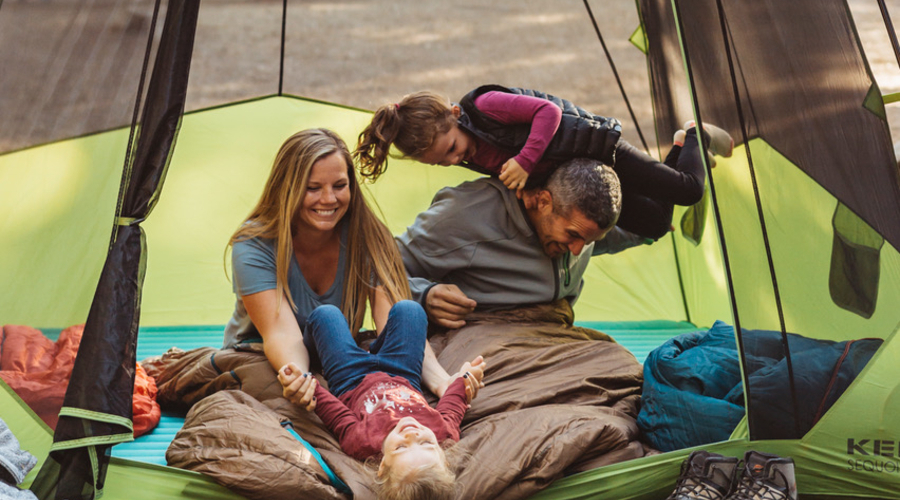The Boulder-based outdoor gear brand is doubling down on friends, family and versatility for Spring/Summer 2018.
Writer: Carly Terwilliger
At its home in Boulder, CO, Kelty is in its third year of promoting its “Base Camp” approach to getting people outside. According to Vice President and General Manager Eric Greene, 2018 was the third wave of the initiative, and “2019 is going to be even bigger.”
As the outdoor marketplace shifts toward millennials, Kelty confirmed that those between the ages of 25 and 45 are its most active purchasers. And with that shift comes an evolving set of priorities. “It used to be that camping would be the activity that people were into, or backpacking,” said Greene. “Now it’s more diverse. People want to go SUPing, attend festivals or go trail running.”
He continued, “That’s what has been Kelty’s wheelhouse all along – things that are easy and comfortable, but also last. Our mantra is that memories that last start with gear that lasts.” Because the company is focusing on a consumer that’s not necessarily looking to suffer in the backcountry for days on end, it has plenty on offer at a “value price,” said Greene. “Not cheap, but value.” He added that Kelty has become a leader in the “true embrace of ‘base camp’ and car camping,” an area that’s poised for continued growth in the future.
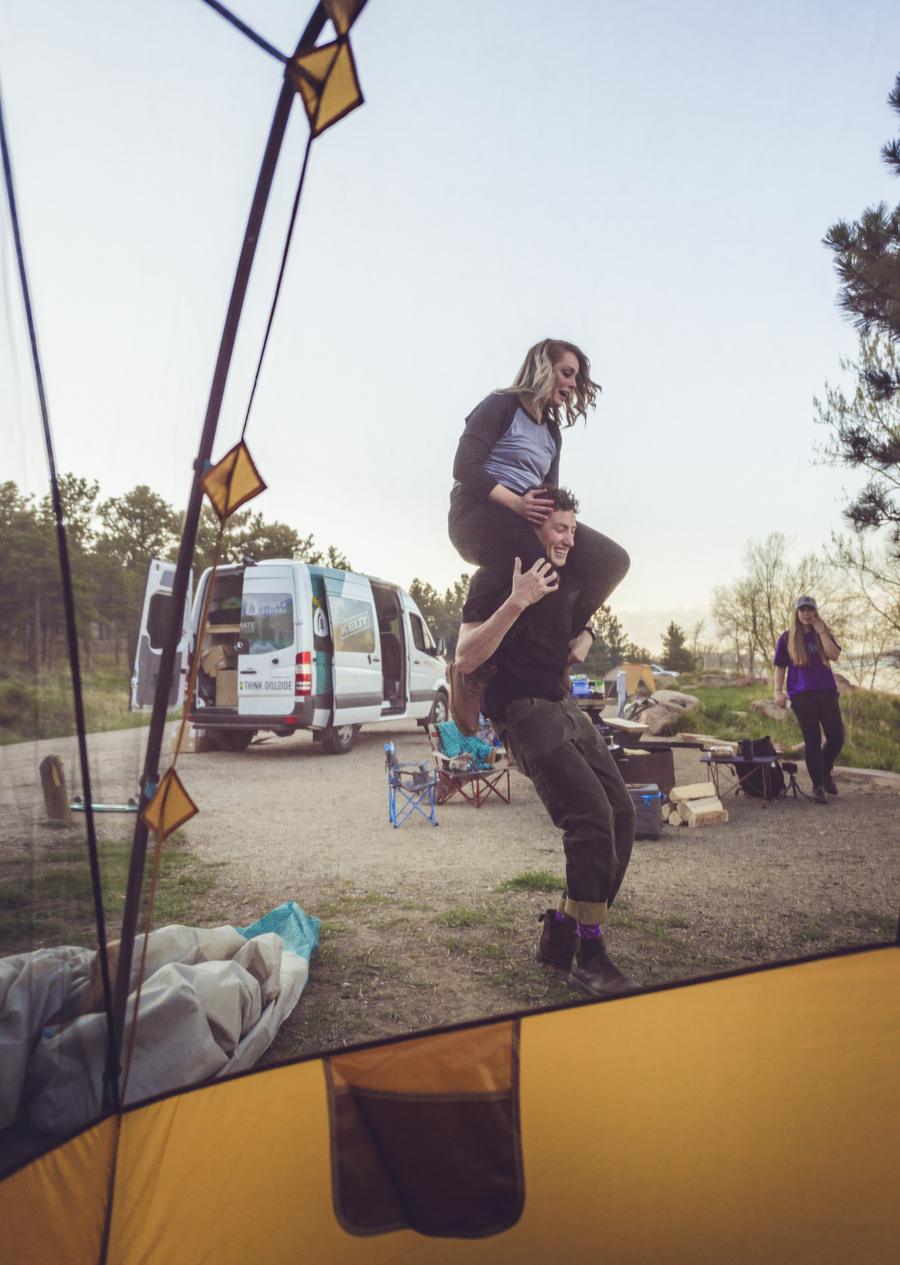
The base camp mentality is well represented by Kelty’s Sequoia tent, new for Spring/Summer 2018. The roomy Sequoia is “what I’d call a generous four-person tent,” said Nels Larson, Kelty’s senior product manager – tents. At 78 inches tall, the tent was specifically designed for comfortable standing inside. And although it weighs in at around 20 pounds, it packs down to a size that’s handy for car camping and is loaded with amateur-friendly features like an easy-setup pole design and a big step-through door.
“How people get together and recreate is changing,” observed Larson. Tents like the Sequoia aren’t meant to be a replacement for a compact, ultra-lightweight tent – which is great, because there are scads of people who don’t need that. They want to go camping with their kids or hang out in the woods with their friends, but comfort is important to them, said the Kelty team. The idea of a tent as the “social hub of camping,” rather than a shelter for sleeping and getting out of the elements, is gaining traction. “We’ve hit a nerve with this idea,” added Greene, “and we’re driving harder into the nerve we’ve hit on.”
That forward strategy includes responding to consolidation and the movement to online. To eliminate overlap and better serve consumers in different retail channels, said Greene, Kelty is asking, “What do we build for specialty? For REI? For Amazon?” And even if a shopper is planning on spending their dollars at a local shop, “they’re still going to do a lot of their research online,” Greene pointed out, so it’s important for brands to be there as well.
But while Kelty is ramping up its content, videos and education to cover its bases online, it’s also planning to have feet on the ground at brick-and-mortar retail locations to “touch the end consumer with fun events that are targeted at them,” said Greene. “If your product is no good, you’re toast – but there’s also brand building” and making your product stand out at retail.
For example, Kelty is making a push in trekking poles by expanding its SKU count and adding the Strider hiking staff – but also by introducing new header cards. “One of the challenges at retail for trekking poles is that displays are a mess,” said Larson, who also oversees the pole category. The new designs and display strategy will complement the overarching Kelty “just get out there” messaging. “Car campers still go on day hikes,” Larson observed, and after a “tremendous response” to trekking poles in previous seasons, placement of the category is now widespread throughout “national, hunt and fish, and specialty.”
The brand identity Kelty is building has a lot to do with leading families toward their first camping trips with products designed to be introductory purchases. Sleeping bags like the Galactic and Tuck models straddle the line between high-performance functionality and friendly price points. “Our idea is to build their first good thing,” said Greene. “They start out dabbling, then do more and more” if they have a good time and their gear meets their expectations. And when it comes to expectations for kids’ equipment, it can get complicated.
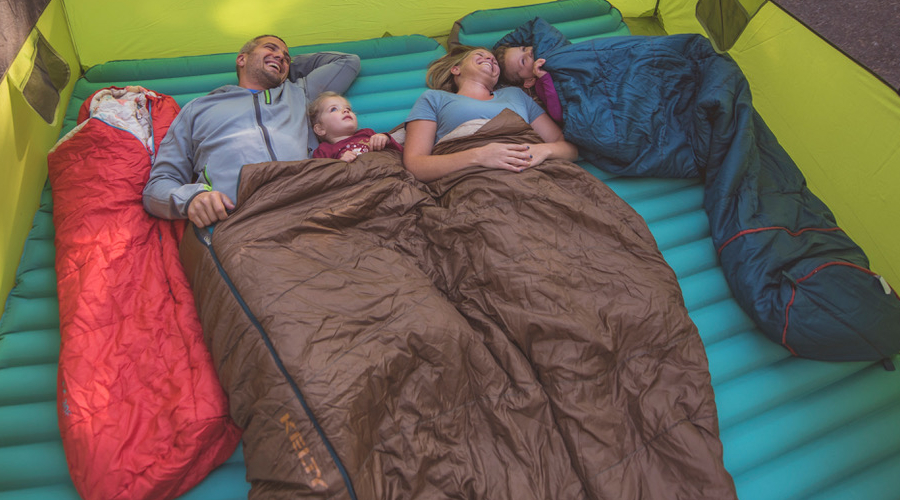
“We’ve revamped all kids’ sleeping bags” for SS18, said Colleen Hopwood, product manager – sleeping bags. “Our big initiative is making bags that appeal to kids,” she said. The new offerings also respond to a parenting reality: sometimes parents just want an affordable, grab-and-go rectangular bag for their kids, “even if they have a high-end mummy bag for themselves,” said Hopwood.
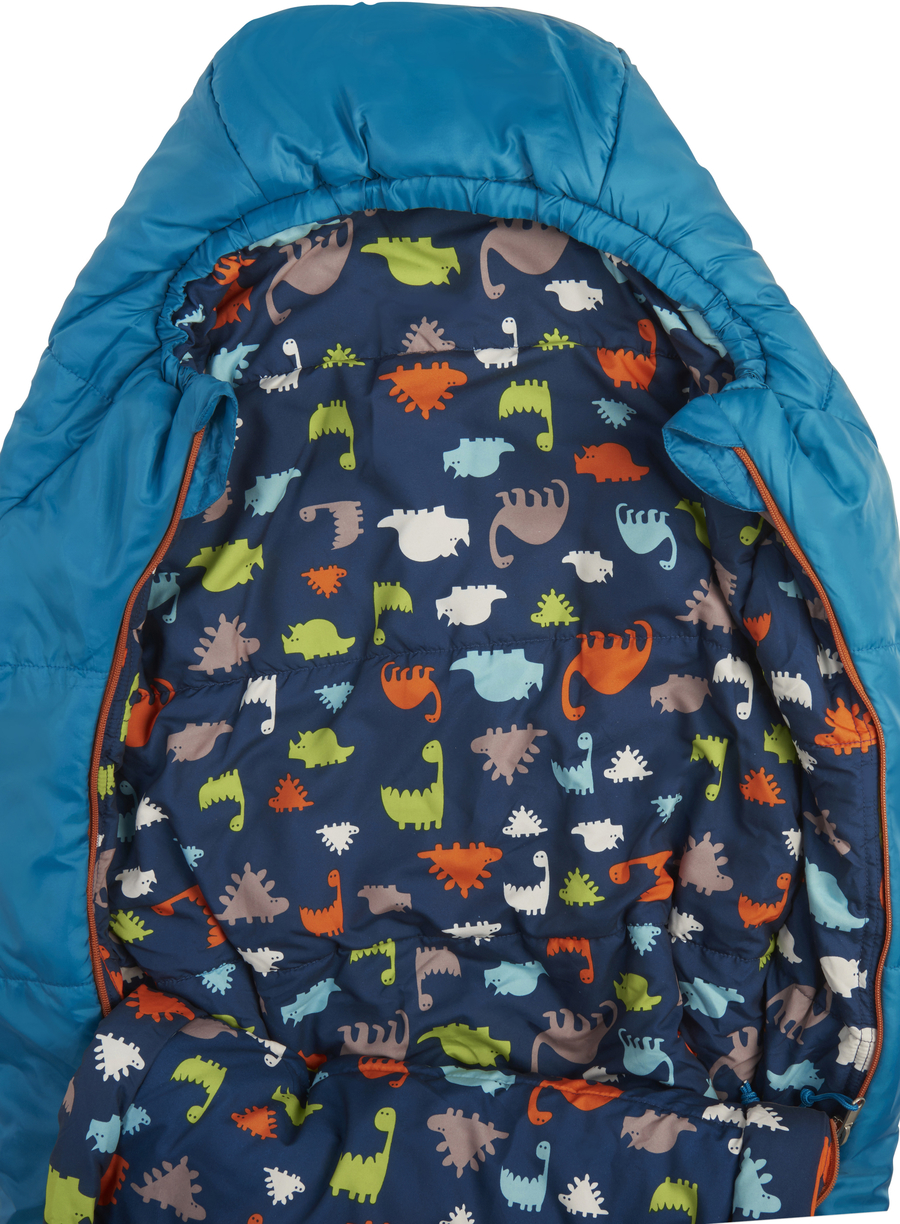
Kelty is one of the only companies that makes a sleeping bag specifically for toddlers, said Hopwood, and the Woobie is coming back next spring with design and style upgrades. “The double zipper means parents can easily lay the kid down in the bag once they fall asleep,” Hopwood explained, and the bags feature lining designs that appeal to a younger audience. The Woobie dinosaur pattern lining (pictured right) is especially eye-catching and whimsical.
For older children, the Big Dipper bag extends an additional 12 inches and is “meant to grow with your kids,” said Hopwood. Since they’re going to use the product for years, it was important to make a bag “they would like for that whole period of time,” she explained. Drawing inspiration from brands like Abercrombie & Fitch and Hollister, Kelty put the Big Dipper through a “major aesthetic change” and incorporated liner patterns – paisley, for example – that will continue to engage kids as they mature.
As Kelty keeps a sharp eye on the market and how people are spending their time and dollars in the outdoor space, its team is focused on “getting them brand loyal while they’re getting their feet wet – or more ideally for camping, not wet,” concluded Larson with a smile.
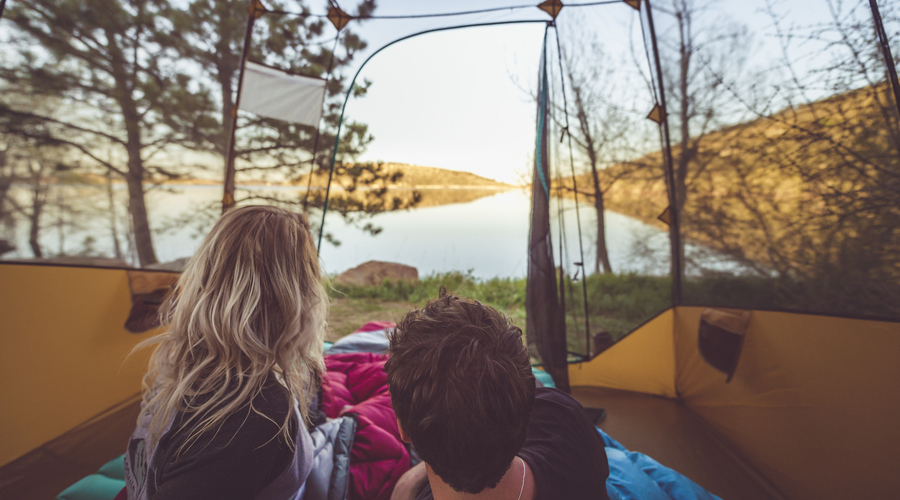
Photos courtesy Kelty

